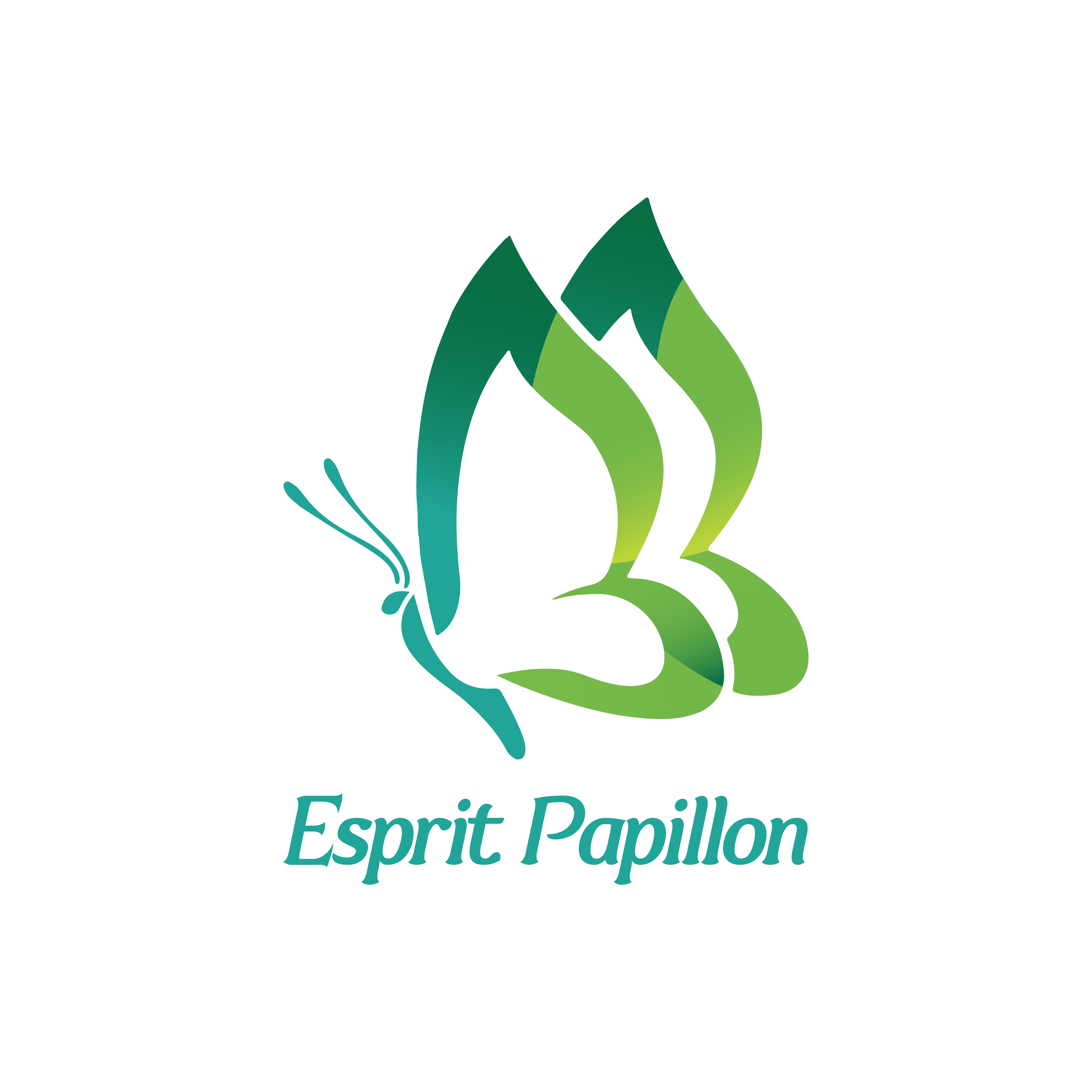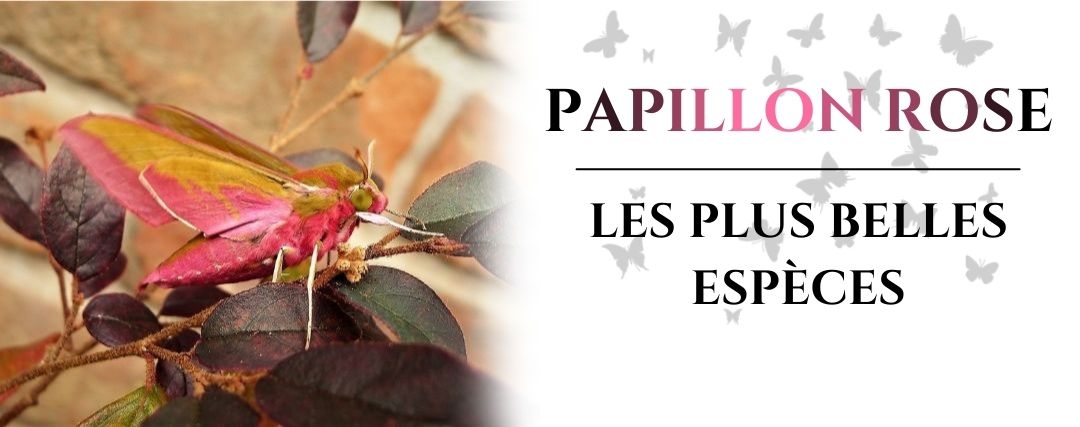Can butterflies be pink?
Many experts claim that there are no butterflies that are actually pink in color, although some species can appear pink due to their iridescence. Pink is not a color that exists in nature, it is not a wavelength, and it does not appear in the visible spectrum.
Are pink butterflies rare?
Butterflies that appear pink are rare in nature. Often they are closer to purple, or have translucent or colorless wings, but their shimmer can produce a pink effect in sunlight.
Where can they be found ?
As we saw above, pink butterflies do not really exist, but we will keep this name for simplicity. Although there are relatively few species of pink butterflies compared to other colors, they are distributed on almost all continents on the globe.
The most beautiful species of pink butterflies around the world
Deilephila porcellus

Deilephila porcellus, also called Lesser Vine Hornmoth, is a moth of the Sphingidae family.
It is found in Europe in coastal areas, heaths and meadow edges where plants of the Galium genus are present. It is possible to observe it up to 1600 meters above sea level in the Alps and in Spain, and up to 2000 meters in North Africa and Turkey. In central Iran and Central Asia, it generally evolves between 2000 and 2500 m.
The span of its wings varies from 45 to 51 mm. This moth flies from May to July depending on location.
The forewings are ochreous with a slight olive tint; the anterior edge is edged and spotted with pink, and there is a broad but irregular band of the same color on the outer edge. The hindwings are blackish on their upper edge, pinkish on their outer edge and ochreous tinged with olive in between.
The head, thorax and body are pink, more or less variegated with olive; the thorax has a patch of white hairs above the base of the wings. The coloring is very variable.
In the drier, warmer, arid regions of Asia Minor and Central Asia, pink coloring is absent.
Eochroa trimenii

Eochroa is a monotypic genus of moth in the family Saturniidae.
It is a pretty little moth with a wingspan of 65 millimeters, bright pink with yellow borders and large eyespots on the wings. Males have disproportionate antennae.
The larvae are cream colored with irregular black stripes and short black spines and feed on various Melianthus species. Adults appear in autumn.
Its only species, Eochroa trimenii, inhabits arid rocky areas and mountain passes in Africa where its host plant grows.
Pyrausta aurata

Pyrausta aurata, also called Mint moth, is a small moth of the Crambidae family.
It has a wingspan of 18 to 20 millimeters. The forewings are brown and pink with golden yellow markings. The number and intensity of these marks are quite variable. Usually the forewings have a single round golden spot, often accompanied by other minor golden spots.
Yellow spots can also be greatly reduced to the point of being completely absent. Sometimes there is an almost indistinct wavy golden line between the back and the main golden spot. The hindwings are dark brown or also black, with a broad transverse yellow stripe approximately down the center of the wing.
This species can be found throughout most of Europe and it is also widespread in North Africa and North Asia. In the east, it is present from Siberia to North China, Korea and Japan. In the south, it covers Asia Minor, the Middle East, Iran, Afghanistan, Central Asia and Mongolia.
These moths inhabit chalky and limestone meadows, woods, marshes and gardens.
In the UK it has two broods; in May/June, and in July/August. In northwestern Europe it can be seen from April to late September and is capable of having two generations per season.
This moth flies day and night. As its name suggests, the mint moth often uses mint (Mentha spicata, Mentha rotundifolia) as a food plant, although it can also be found on other species such as oregano, Salvia pratensis, Melissa officinalis , Nepeta cataria and Calamintha.
Dryocampa rubicunda

Dryocampa rubicunda, also called Maple Anisote, is a small North American moth of the Saturniidae family. This species is known for its woolly body and pink and yellow coloring, which ranges from cream or white to bright pink or yellow.
Males have bushier antennae than females, which allows them to sense female pheromones for mating. Males have a wingspan of 3.2 to 4.4 centimeters and females 3.8 to 5 centimeters. Species can be identified by their unique, but variable, pink and yellow coloring. The legs and antennae are reddish to pink, the body and hindwings are yellow, and the forewings are pink with a yellow triangular stripe down the middle.
This magnificent butterfly lives in the eastern United States and adjacent areas of Canada. Its northernmost range includes southern regions of Canada, including Ontario, Quebec, New Brunswick, Nova Scotia, and Prince Edward Island.
Its range extends south along the Atlantic coast of North America to Dade County, Florida, and extends west from eastern Texas to Minnesota.
Maple Anisote is found in temperate deciduous forests as well as suburban areas and surrounding urban landscapes.
The name of this butterfly comes from the fact that it is mainly found on maple trees. Adult females lay their yellow ovular eggs in groups of 10 to 40 on the underside of maple leaves.
The emerging caterpillars, also known as the green-banded maple worm, feed primarily on the leaves of their host maples, including red maple, silver maple and sugar maple.
As caterpillars eat the entire leaf blade, in cases of dense populations the caterpillars are known to defoliate trees, resulting in cosmetic rather than permanent damage. However, like all other Saturniids, adult butterflies do not eat.





